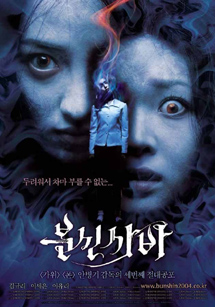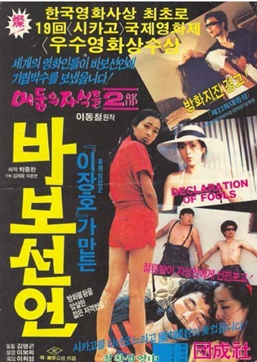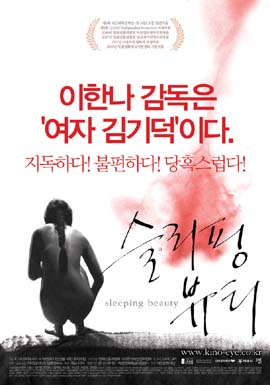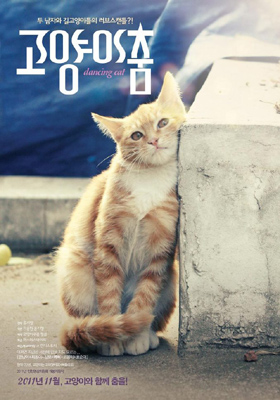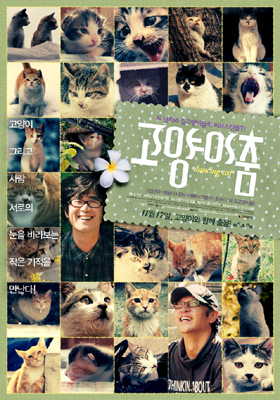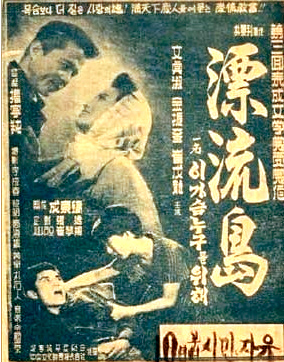The Woman Who Leaves Work In The Morning (1979)
12th July 2012
The end of the 70s was an unusual, and frustrating, period of Korean film history. On the one hand you had people like Kim Ki-yeong with movies like Iodo and Neumi, pushing the envelope with experimental imagery but his commendable frankness about sex is starting to slip into near-exploitation– a fault suffered by many films of many director the 1980s. And then you have films like this which falls back on the tried, true and safe formulas of the late 60s and early 70s. On the surface, through its title and its title, The Woman Who Leaves Work in the Morning seemed like it might have fallen into the former grouping, trying to sell the film by making it appear far more sensual than it actually is– another trend of the 80s, especially when covers were shot for the VHS markets. This movie debut work of director Park Yong-joon who would continue to direct films until 2001 when he directed the direct to video Game Over and draws from more famous movies–or perhaps their source materials– of the past, particularly I Hate You Once Again and a little bit of Heavenly Homecoming of the Stars. Two of the good things about this film are Ko Doo-shim in her first role and Ha Myeong-jong showing why he could easily be thought of as the Shin Sung-il of the 70s. I did not mind watching the film for these two and the story did have some interesting moments but for the most part, it was very familar.
Jang Soo-mi (or Jang-Mi–meanng Rose–for short) is a hostess in a bar, meaning that she sits with the male customers, pours drinks and flirts with them to ensure they keep coming back. One morning, while walking home, she encounters a young photographer and is smitten by his good looks and charm. They meet only a couple of times before the artist, Song Woo-yeol, simply moves into the small apartment that Jang Mi shares with her younger sister Yeong-ah. The elder sister is clearly in love although the two have no commitment to each other at this point, and she resents that Yeong-ah and Woo-yeol are growing quite close. It is quite innocent on the part of Yeong-ah who, although having graduated from high school, is not yet out of her teens but Woo-yeol is something of a ladies’s man and it is hard to believe his protestations of innocence–especially after Jang-mi walks in on the pair kissing. She knows that Woo-yeol cannot be in the same house as her sister, so Jang-mi makes a choice– and kicks Yeong-ah out of the apartment!
I wish, and fully expected, that more time would be spent on Yeong-ah after leaving the house. How did she live? Was she resentful? What happened to the relationship between the two sisters. But no. The film glosses it over. Yeong-ah admits her mistake, packs her bags, and leaves not appearing again. Nor does Jang-mi bring her up in one of her moments of guilt or self-pity that she regularly has bouts of. Instead, she and Woo-yeol become lovers. They both continue with their work and lives while living blissfully together.
However, this bliss does not last. Woo-yeol returns home to visit his father who tells him that he must marry soon. The young photographer becomes engaged to a woman in his own economic class which, as it turns out, is considerably higher than how he presented himself. His status all but ensures that he could never realistically marry a hostess. After calling his home to find out when he will be returning, Jang-mi learns that Woo-yeol has another girlfriend. At first infuriated, Jang-mi soon calms down after talking with Woo-yeol. He promises to come to see her the following day, which is her birthday, instead of telling her the truth, that he will be married in two days. After she prepares her own birthday dinner and waits up for him all night, Woo-yeol finally gets around to telephoning and explaining that he could not come because he was planning his wedding. Once again mad with rage, Jang-mi drives to the wedding site, half-intending to kill her lover for his betrayal, but becomes frozen after getting his attention after the ceremony. Not only does she not attempt to kill him, she does not even tell him that she is pregnant.
The movie then jumps ahead approximately 6 or 7 years and the story of I Hate You Once Again starts and continues for the last 30 minutes or so of the film. Anyone familar with that classic story knows that the single mother in that story gives up her child to the father so the youngster can be raised in luxery, only for the child to be miserable for missing his real mother.
The movie ends on a note that should be somewhat happy, but somehow just seems to sudden and incomplete and while it was clearly tries to dredge up feelings of nostalgia for one’s mother, it fails miserably in doing so. I blame the child actor… he was quite bad, often looking at someone off camera and being very unconvincing in his rapid mood swings. While not a terrible movie, it is perhaps a little too typical of early-70s film-making in Korea. If you have not seen many films from that period, you may find it interesting. But the fact that it comes after that period had already passed made the viewing experience seem a little out of date and if you are familar with 70s films, you can probably skip this one as it offers nothing new.
Posted in 1970s | Comments Off

